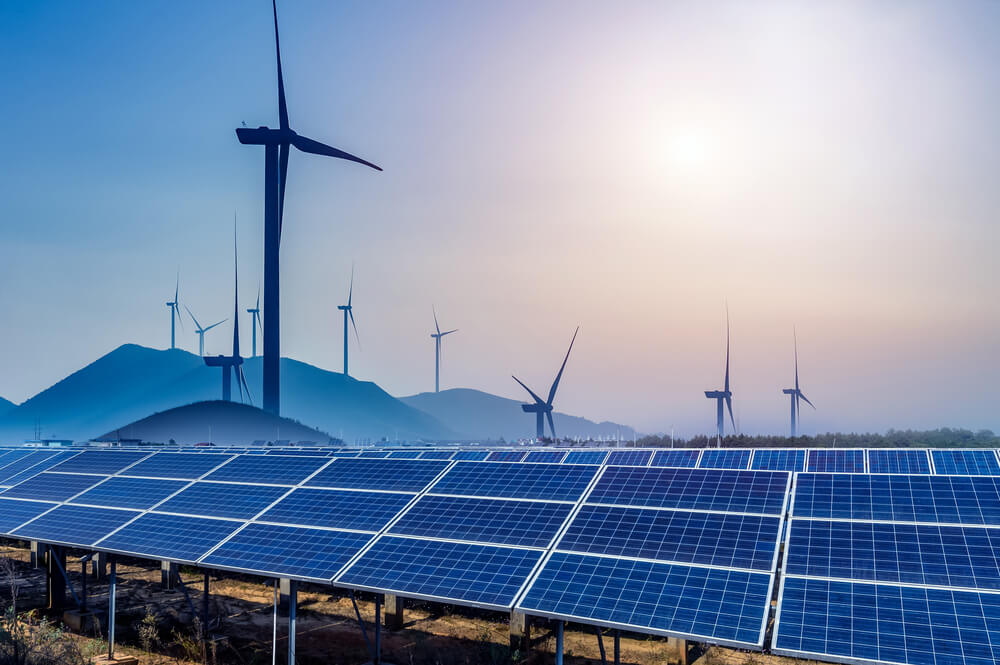The latest renewable energy hotspots
Renewable energy, having zero or minimal carbon emissions, is a growing alternative to the traditional fossil fuels we are familiar with. Many countries around the world are embracing renewable energy, along with other sustainable approaches, in order to preserve our environment for future generations. According to the Financial Times, the coronavirus pandemic accelerated the trend towards renewable energy, and in 2020, renewable power hit a record of 200 gigawatts.
Renewable energy, or clean energy, originates from sources that do not deplete. As these resources are constantly replenished, they are increasingly being used in place of fossil fuels as they release fewer carbon emissions into the atmosphere, and in many, cases reduce costs. Examples include hydropower, wind energy and solar. So, where are we seeing an increase in these renewable energies being used?
Wind energy
Wind energy is considered to be one of the fastest-growing renewable energy technologies. It is used to produce electricity using the kinetic energy created by air in motion.
In their efforts to reach zero carbon emissions by 2060, China has become the world’s largest producer of wind energy. Despite the restrictions of the pandemic, developers built almost 100GW worth of windfarms in 2020, more than the whole world combined in the previous year. It is expected that in the coming years, China will drive growth in this sector, after it reaches peak carbon emissions in 2030.
In the United States, more new energy came from wind than any other source in 2020. The Department for Energy (DOE) reported that last year 42% of new electricity generation capacity was sourced from land-based wind energy. As part of efforts to have a carbon pollution-free power sector by 2035, the Biden administration wants to expand offshore wind capacity to 30 gigawatts by 2030.
Hydropower
Hydropower is energy is generated from water-flow, such as a river or a dam, relying on the endless, constantly recharging system of the water cycle. Norway is leading the way in this area by primarily utilising hydropower as the country’s rivers, steep valleys and substantial rainfall help to enable 45% of hydropower supply. Furthermore, according to new data from a study by Utility Bidder , an energy tariff comparison platform, 56% of Norway’s total energy usage comes from renewable sources, more than any other country in the world.
In Brazil, where there was once a dependency on fossil fuels, there has been a noticeable shift, and government administrations are instead relishing the benefits of renewable energy. The country is now thought of as a leader in biofuel and hydropower, and their energy sector is one of the least carbon-intensive in the world. Following a number of highly effective energy policies and initiatives 45% of energy in Brazil is now sourced from renewables .
Solar
Solar technologies convert sunlight into electrical energy through either panels or mirrors that concentrate solar radiation. This can later be used to generate electricity, or alternatively be stored in batteries or thermal storage.
According to the World Economic Forum , in January 2020, India was the newest hotspot for renewable energy investors, with wind and solar power generation set to receive significant investment. India is one of the highest producers of carbon emissions so this hugely significant and will help to achieve the country’s sustainable development goals.
In Southeast Asia , solar is emerging as a key market hotspot, with over $10 billion was invested in solar power in 2020 alone. Given the region’s propensity for sunlight, and the increasing global demands for cleaner energy systems, it is expected that developers will make the most of the huge opportunities available to improve their sustainability trajectory.
Find your next renewable energy job with Quanta
As it is widely acknowledged, climate change is sparking devastating effects all over the world. We are already experiencing rising temperatures, leading to rising sea levels and unpredictable weather patterns. The Intergovernmental Panel on Climate Change (IPCC) indicate that collaborative efforts to reduce carbon emissions and other greenhouse gasses can limit the effects of climate change. There is therefore an acute sense of urgency to implement innovative resolutions to limit damage to our planet.
As a result, we’re seeing a rise in green energy jobs and at Quanta, we’re experts in supplying skills to both traditional and renewable energy sectors around the world for almost twenty years.
The renewable energy market is flourishing, and the opportunities are endless. Find your new career and browse our available renewable energy jobs today.





.png?v=9c66da852d51be41fe90acf5046b80f7)
.png?v=b063bae722cc20e86f7c80b91426db55)
.png?v=36a90c86dfc9fe9c10b03095e461dfe9)